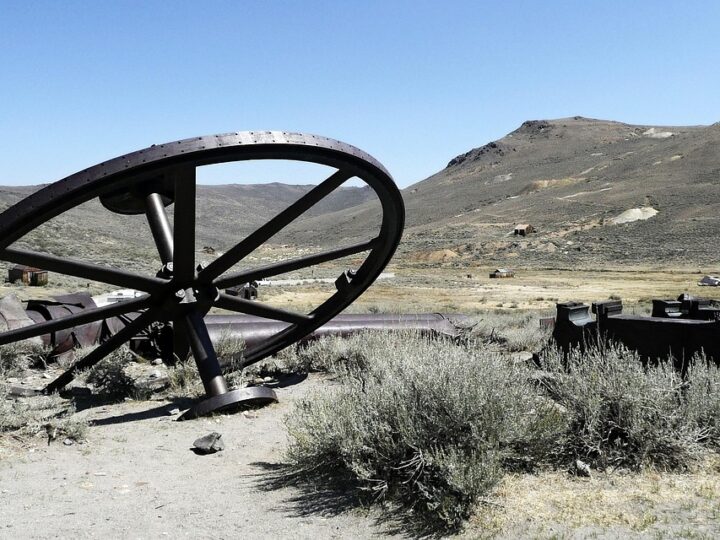In the midst of a consumption epidemic that was devastating entire families on the New England coast, the Ray family took drastic measures to save their eldest son from the disease. The Jewett City vampires were believed to be behind the consumption that flowed through the family's veins. Will burying the bodies and burning them stop them from feeding on the living?
Buried in the annals of Connecticut history is a lesser-known, chilling chapter of America's vampire panic – the disturbing case of the Jewett City vampires.
This grim and fascinating story took place in the mid-1800s in Jewett City, a silent mill town in Griswold, Connecticut. And like many such stories, its roots lay not in mythical monsters, but in the all-too-real terror that was tuberculosis, then known by a much more sinister name: consumption.
The Ray family: a family affected by death
The plot centers around the Ray family, whose seemingly cursed lineage has become an object of fear and superstition in the town. The Rays were a gigantic farming family that was severely affected by the tuberculosis epidemic that was devastating the New England coast. Between 1845 and 1854, several members of the Ray family died in quick succession of tuberculosis. In an era before germ theory, the disease seemed almost supernatural – it ravaged the victim's body, leaving them pale, delicate, and with sunken eyes, sometimes years before death.
And in these uncertain times, when science was waning, folklore eagerly filled the void.
Jewett City's neighbors began to murmur. It certainly wasn't natural. The idea persisted that perhaps the dead of the Ray family did not rest peacefully in their graves, but rather rose at night to suck the life out of their surviving relatives.
Exhumation of the Jewett City vampires
The first person in the family to die of tuberculosis was 24-year-old Lemuel Ray in 1845. He was followed by his father, Henry B. Ray, in 1851, and in 1853 by his brother, 26-year-old Elisha Ray.
A year later, the family's oldest son, Henry Ray, fell ill, causing panic in the community. Surely there was something supernatural about it?
In 1854, driven by grief and superstition, the surviving members of the Ray family took a drastic step. According to contemporary accounts, on May 8, the bodies of Lemuel and Elisha were exhumed at the Jewett city cemetery. The remaining and extended Ray family, along with friends and neighbors, gathered at the cemetery to perform the ritual.
At the time, it was believed that if a body was too well preserved – especially the heart or vital organs – it meant that the deceased was still spiritually vigorous and preying on the living. In such cases, the suspected vampire's heart would be cut out and ritually burned to cut the unnatural bond.
Documents from the era confirm that at least one body was exhumed and burned on a nearby hill. She hoped that this morbid ritual would put an end to deaths in the family and finally composed her restless spirit.
They burned the hearts of the corpses in the cemetery and most likely mixed the ashes from them into a mixture that Henry could drink or ingest in some way. It was believed that this protected and cured him from being fed by vampires, as they believed, by his brother. Or maybe it was enough to burn their bodies so that they would rise from their graves at night and be able to feed the remaining family? The sources of these details remain ambiguous.
But what happened to Henry? Some say they don't know and that Henry most likely survived and the ritual cured him. Perhaps because his tombstone is not right next to his brothers in the cemetery, people believe this. Other sources say he died the same year, aged only 34. In addition to his death, his own children and wife also soon followed. Because a little further behind his brothers and family you can see his grave.
Echoes of a wider vampire panic
What makes the Jewett City Vampire Panic particularly significant is that it was not an isolated case of morbid superstition—it was part of a broader phenomenon that plagued New England in the 18th and 19th centuries.
Between 1790 and 1890, many cases of so-called vampire exhumations were documented in Rhode Island, Vermont, Massachusetts, and Connecticut. All were reactions to the outbreaks of consumption that devastated families and tiny towns where fear was a physical, everyday companion.
The celebrated Mercy Brown case of 1892 was the last well-documented exhumation of vampires in America, but the events in Jewett City almost forty years earlier show how widespread and desperate these beliefs were.
The Modern Discovery and Legacy of Connecticut's Vampire Graves
The Ray family graves remained largely intact until 1990, when another disturbing discovery was made nearby – the now celebrated Griswold “JB” vampire grave, with the remains arranged in a classic anti-vampire configuration: skull and thigh bones crossed beneath it.
Read more: The Griswold vampire case and JB's true identity in the coffin
Although not officially linked to the Ray family, the close proximity of these two cases in Griswold illustrates how deep the vampire panic has gripped rural New England communities. Had the Rays heard of the rituals the Walton family performed decades earlier? Did an infectious disease really cause fear?
Today, the Jewett Municipal Cemetery still stands – an inconspicuous plot in a silent town. Although the original graves from the cemetery have been relocated in recent years due to a construction project. The Ray family graves look like they are still buried six feet underground.
-
Jewett City Vampires and the Ray Family in Connecticut
In the midst of a consumption epidemic that was devastating entire families on the New England coast, the Ray family took drastic measures to save their eldest son from the disease. The Jewett City vampires were believed to be behind the consumption that flowed through the family's veins. Will burying the bodies and burning them stop them from feeding on the living?
-
The Buckinghamshire Vampire: England's forgotten bloodsucker
Coming day after day to torment his wife, the Buckinghamshire vampire terrorized the entire town for days. And he was not stopped until the bishop intervened.
-
Haunted Gotthard Sanatorium Abandoned in the Swizz Mountains
The Gotthard Sanatorium, long abandoned and decaying in the forests of Switzerland, is said to still admit patients who have never checked out. Is it really someone haunting the ancient hospital in the mountains?
-
The Griswold vampire case and JB's true identity in the coffin
Unearthed after the first burial, JB's mysterious grave haunted New England as one of the vampire graves amid the New England vampire panic. Who was this man and what happened that caused his friends and family to dig him up and rearrange his bones and actually put him in a grave?
-
The Vampire of Alnwick Castle: The Restless Dead of Northumberland
Often called the Windsor of the North, Alnwick Castle also has gloomy legends. One of them is that there was once a vampire demon lurking in the gloomy corners of the castle.
-
The Architect's Ghost: Hauntings at the Grand Hotel Giessbach
The Grand Hotel Giessbach has been hosting Switzerland's elite for over a century and is said to be haunted by the ghost of Horace Edouard Davinet, the architect behind it all.
-
The Restless Dead of Rhode Island: The Vampire Legend of Ruth Ellen Rose
Died as a newborn girl, Ruth Ellen Rose's family believed she was one of the undead, a vampire rising from the grave every night to feed on her siblings, slowly dying of the same disease as her. To prevent this, they decided to dig up her body and cut out her heart.
-
Zawudschaw's Night Horse: The Phantom of Gruyère Moor
Luuring weary travelers to mount, the gloomy night horse Zawudschawu is said to prowl the marshy moors of the Gruyère Moors.
-
The Last Ghost Hunt: Vampire Panic in Marotinu de Sus, Romania
In the rural and more superstitious parts of Romania, fear of the undead is not necessarily a thing of the past. Although the hunting of vampires and strigoi is mostly done in secret and as a family business, it still happens. Something that Petre Toma's family experienced when he was accused of haunting his extended family after his death.
-
Haunted Mortgage Halls on Pacific Isle
At the inconspicuous-looking Pacific Isle Mortgage office building, employees complained that a ghost was disturbing them at work. It is said that ghosts running through the halls and pranking employees are malicious.
-
The legend of the vampire Nancy Young rising from the grave
It is said that she sucked the life out of her siblings. A newborn girl, Nancy Young, was believed to be a vampire after she died of tuberculosis in Foster, Rhode Island. To stop the undead curse, the family exhumed her body and set it on fire.
-
A murderess haunting the courthouse in Calcasieu
The courthouse in Calcasieu, Louisiana is said to be haunted by Toni Jo Henry, a notorious figure in local history who was executed there in 1942. Visitors often report unexplained occurrences such as strange noises and the smell of burnt hair after her death.
Vampires of Jewett City, Griswold – Cursed Connecticut
Jewett City Vampires – Wikipedia
Vampires of Jewett Town – Atlas Obscura
The Vampire Case: The Ray Brothers of Jewett City – Lore Locations
1854-05-24-Vampires of Jewett City – Newspapers.com™
The cemetery hides tales of vampires – The New York Times
Image Source: Pixabay.com






